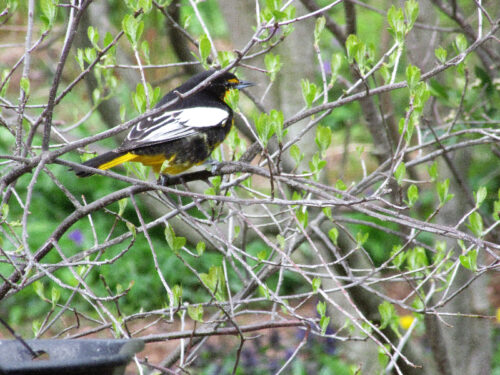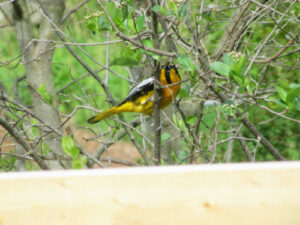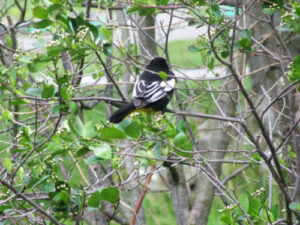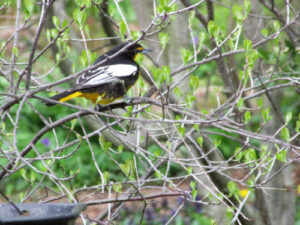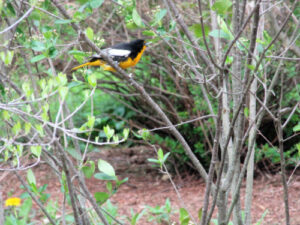Photo by Margaret Bowden ||
On 7-8 May 2017, a Black-backed Oriole visited the feeders at a private residence in Sutton, Massachusetts. The homeowner noticed that the bird was different from the other orioles and secured photographs. The homeowner circulated the photos to local birders a week after the bird had departed, at which point the bird was identified as a Black-backed Oriole. This individual is almost certainly the same individual that visited a feeder in Sinking Spring, Pennsylvania from January 31-April 10, 2017. This conclusion is based on the fact that both individuals possess anomalous facial markings. Both individuals have a broad pale patch over the left eye, a very small lower eye arc on the right eye, and some whitish coloration in the lores just in front of the right eye. Typically Black-backed Orioles have a wider lower eye arc and are orange throughout the lores. The large white patch above the left eye is particularly anomalous for Black-backed Oriole and further confirms that these two sightings represent the same individual. Adding further to this epic tale, Patrick Dugan viewed a Black-backed Oriole in Stamford, Connecticut on 14 May 2017.
Black-backed Oriole. 7 May 2017. Sutton, Massachusetts. © Margaret Bowden.
The Massachusetts Avian Records Committee recently reviewed this record and voted to not accept it. While the committee agreed that the individual was indeed a Black-backed Oriole, all committee members felt that a captive origin could not be ruled out given 1) the Black-backed Oriole is a short-distance migrant, 2) there is a lack of history of vagrancy in this species, and most importantly 3) this bird can be found in the caged bird trade. For example, see this video of a hand-fed Black-backed Oriole in Mexico.

